Happy Samhain/Dias de los Muertos everyone! I am thrilled announce the publication of 'The Plant Pamphlets' by my much-loved partner Mark Watson, a testimony of his work with plants, places and people which I compiled this summer. Mark was a great collector of seeds and loved how they contained both the past and the future in their small resilient forms. It is my hope that this small book of flowers will seed many heart-felt encounters with the plant world - which was always his wish and the core of his teaching.
Here is my introduction with a short flower extract and fermentation recipe. There will be an online launch tonight and you are very welcome to join us. Details are at the end of the post.
Mark in Flowers: An Introduction
From 1999-2024, Dark Mountain’s Mark Watson taught and demonstrated the art of holding a dialogue with (mostly) wild plants. Part-manual, part-memoir, this small book is a distillation of his hands-on practice, ‘hanging out’ with twelve flowers and a tree over a year: from a conversation with burdock in a community garden, to lying alongside sea kale on the Suffolk shore, to foraging for mallow leaf fritters and flower teas. With instructions, recipes, and original illustrations by Anne-Marie Culhane.
There is a small blackboard by a writing desk in a cottage down a lane in Suffolk, England. Outside the window there is an old wheelbarrow full of flowering herbs and beyond that a hedge of cherry plum and a line of ash and hawthorn trees by a field of barley. The table faces east towards the sea, and on summer mornings it is flooded with sunlight, and sometimes, on clear nights, with moonlight. On the blackboard are chalked several titles: The Plant Pamphlets, Radical Relaxation, Rooted in Time and Space, Staying with the Trouble, Roots and Mycelium.
This desk belonged to a man who loved plants, Mark Watson, and for the last few years, when he lived in this cottage, it was his wish to produce a series of small monographs on some of his favourite flowers and trees. His daily work at this desk however kept his attention on other things, so he did not get to create them. This year, after his unexpected death, I decided to write up some of his work with plants, to record the simple, direct relationship one generous and open-hearted man had with the living world. His desire was always to share it with others, knowing that we live in ecologically perilous times and that part of this crisis was caused by a disconnection from the Earth.
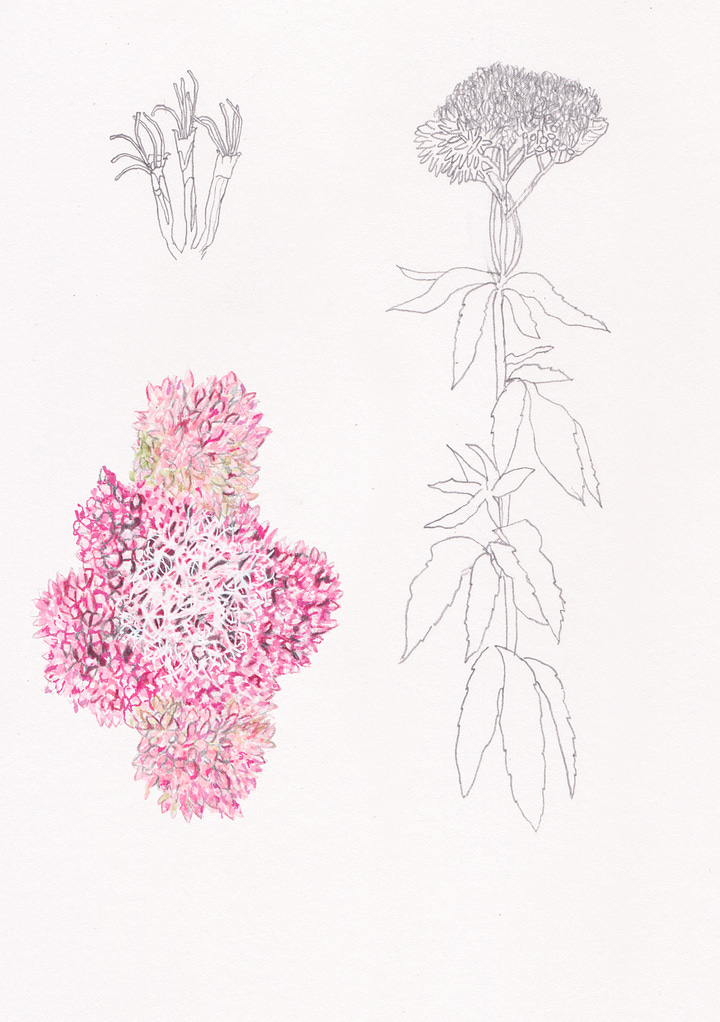

I worked alongside Mark with a ‘plant practice’ that began in the green spaces of Oxford as the millennium turned, then travelled with us as we lived in Arizona, France, Wales and finally rooted ourselves in the clay and shingle of East Anglia. In 2008, Mark began a series of walks, talks, workshops and demonstrations, to transmit some of his knowledge and experience with this hands-on practice. He was not a lofty teacher, espousing medicinal qualities and ‘information’ about plants. Although as a linguist he knew (and loved) their botanical Latin names, he stuck to the common names and the common ground in all things. His transmission was friendly and by example: follow me, have a look, try this, taste this. Isn’t it fantastic?
His enthusiasm and delight, and his (often very funny) stories, had people connecting with plants without their knowing it. Sometimes testimonies would arrive, months and years later, from people who had gone to his sessions and taken up ‘hanging out with plants’, to say now it was keeping them rooted in their home territories and more able to stay with the trouble of these challenging times.
The twelve plants in this small book were chosen as they represent a ‘canon’ of sorts, the plants Mark spoke about with anyone he met, whose praises he sang; the ones he liked to hang out with, grow, cook; whose seeds he avidly collected and dispersed. The texts have been written from Mark’s notebooks and writings, and also from recollection of our joint plant practice from 1999–2024.
It is dedicated to the memory of this wonderful loyal friend and ally of all living green beings, and to all the people around the world who love and cherish them.
May it flower for you too as you walk through.
What might a plant practice look like and what do plants have to say to us?
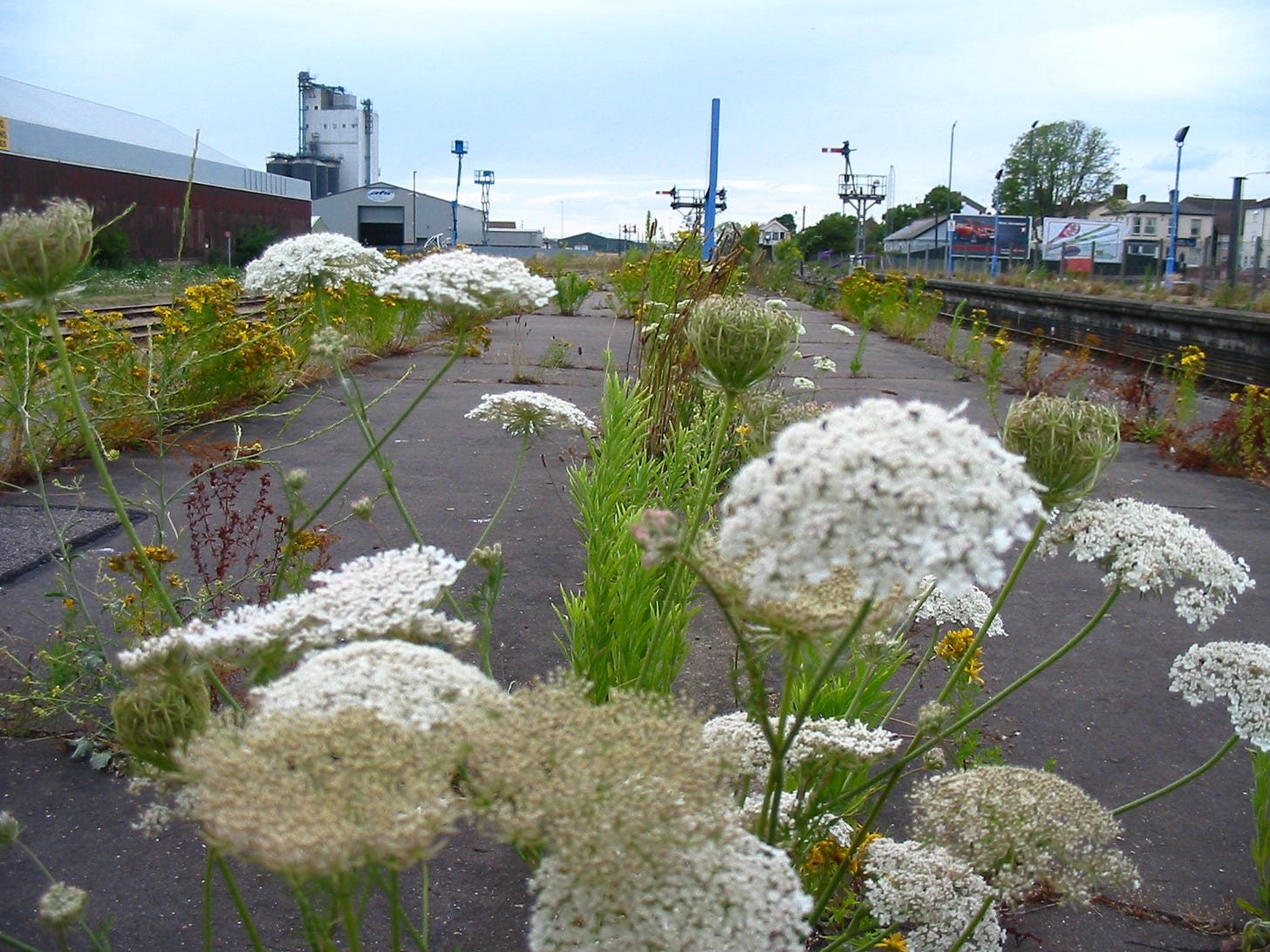
The Wasteground Garden
Mark cherished all flowers but the ones that really caught his eye were those that grew robustly through the cracks of pavements and platforms, in abandoned lots and waste grounds. He loved them for their resilience and regenerative qualities, their spirit of come what may in the face to the human treatment of them as 'weeds', especially in the controlled spaces of a garden.
Last year, I put a wooden pallet on a patch of grass in the garden and covered it with pots of plants of mostly Mexican origin: chillies, anise hyssop, marigolds (Tagetes) and others. I called it ‘Xochimilco’ after the floating gardens in Mexico City, although they were ‘floating’ on a wooden pallet rather than water.
In winter I cleared the pots but left the pallet, and when I removed it in the spring there was a bare patch of earth 4ft x 2ft, on which I sprinkled some grass seed and left.
By summer, the grass hadn’t done so well, but all sorts of waifs and strays began to appear in the patch that were nothing to do with my planting intentions. And I left them to do their thing.
Here are the denizens of this tiny waste patch, among them quite a few edibles: various grasses, white clover, ribwort plantain, horsetail, rocket, lemon balm, dandelion, good king henry, small flowered hairy willowherb, marigold (Calendula), fat hen, nipplewort, fennel, yarrow, vervain (Verbena officinalis), nettles, chard, wild carrot, evening primrose, sorrel, bramble, ground elder, bristly oxtongue and wild lettuce.
I’ve been cropping the fat hen to include in a summer version of the spring delicious fritters, and it grows back in no time.
Not such a waste ground, after all!
The plants keep us in time; they rise, they scatter seed, they fall. They
are where they are. They are in the bigger Now. That’s what they connect
us with. They bring us home.
(from The Plant Pamphlets)
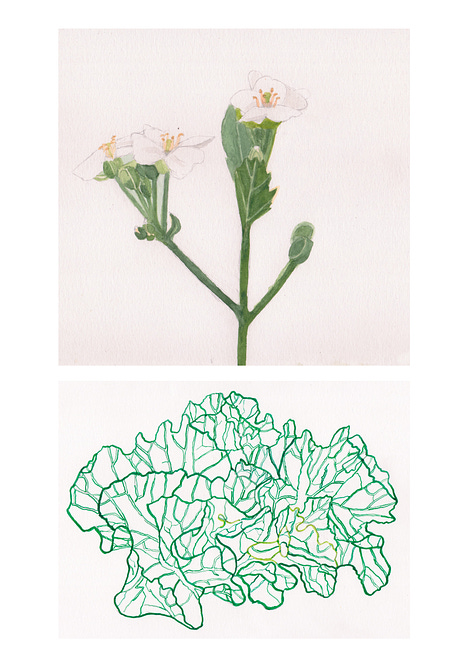
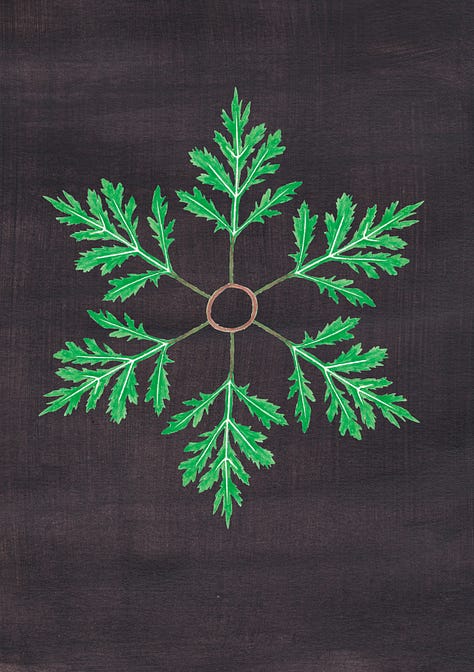
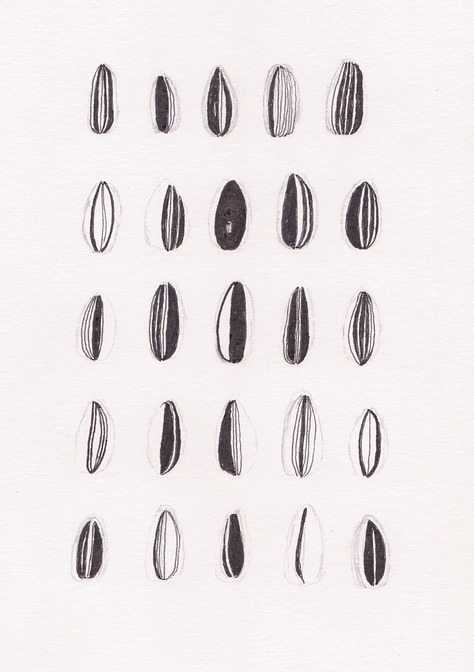
Curtido recipe
Curtido is a ferment popular in Central America, similar to (but not the same as) European sauerkraut or Korean kimchi. Like other ferments, this one never comes out the same way twice, but it always tastes great, and can be ready within three days for a fabulous, gut-friendly relish.
There are some tasty commercial curtidos available in the UK, but it’s more rewarding and less expensive to have a go at it yourself. Here's how I made today's jar:
1/3 medium white cabbage (one of the denser varieties) chopped/shredded
1/3 medium red cabbage, chopped/shredded
1 carrot, julienned
1 onion, thinly sliced
1 level teaspoon chipotle chilli flakes
1 level teaspoon jalapeño chilli flakes
1 tsp of Mexican oregano (Mexican oregano is in the verbena rather than the mint family, and is stronger than the regular oregano we're used to in the UK, but you can substitute this for two teaspoons of regular oregano)
2 teaspoons freshly ground cumin (I heat the seeds in a dry frying pan before I grind them)
2 teaspoons sea salt
1/2 cup of lightly salted water and apple juice mix (50/50)
In a bowl mix the cabbage, carrot, onion, salt, chilli flakes, oregano and cumin until evenly distributed. (You can massage the cabbage first if you want to.)l
Pour in the apple/water mix.
In a 1 litre Kilner/Mason jar press the vegetables down hard. I use the end of a rolling pin for this, and that gets the juices flowing. You can also use a few whole cabbage leaves to cover the vegetables.
You need to make sure the curtido is covered with liquid, so if necessary, use the cabbage heart to hold the vegetables down firmly when you close the Kilner jar.
Keep in a warm place out of the sunlight (in the winter I use the airing cupboard) and place the jar in a bowl to catch any of the liquid that might (and probably will) escape. These ferments can get fizzy quite quickly. Open the lid once (at least) a day to burp the jar.
This ferment can be enjoyed after as few as three to five days. After about five days I generally place it in a new jar and keep it in the fridge, where it doesn't remain long.
(from Issue 23: Dark Kitchen)
Thanks for reading everyone. Tonight (1st November) at 7pm GMT) there will be a launch of The Plant Pamphlets with readings, makings, artwork, music and film, and a chance to raise a glass to a much-missed friend of plants, places and people. Dress flowery.
Find out more and book your (free) tickets with Eventbrite here. Hope to see you there!
The Plant Pamphlets are available from the Dark Mountain shop here.


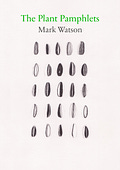


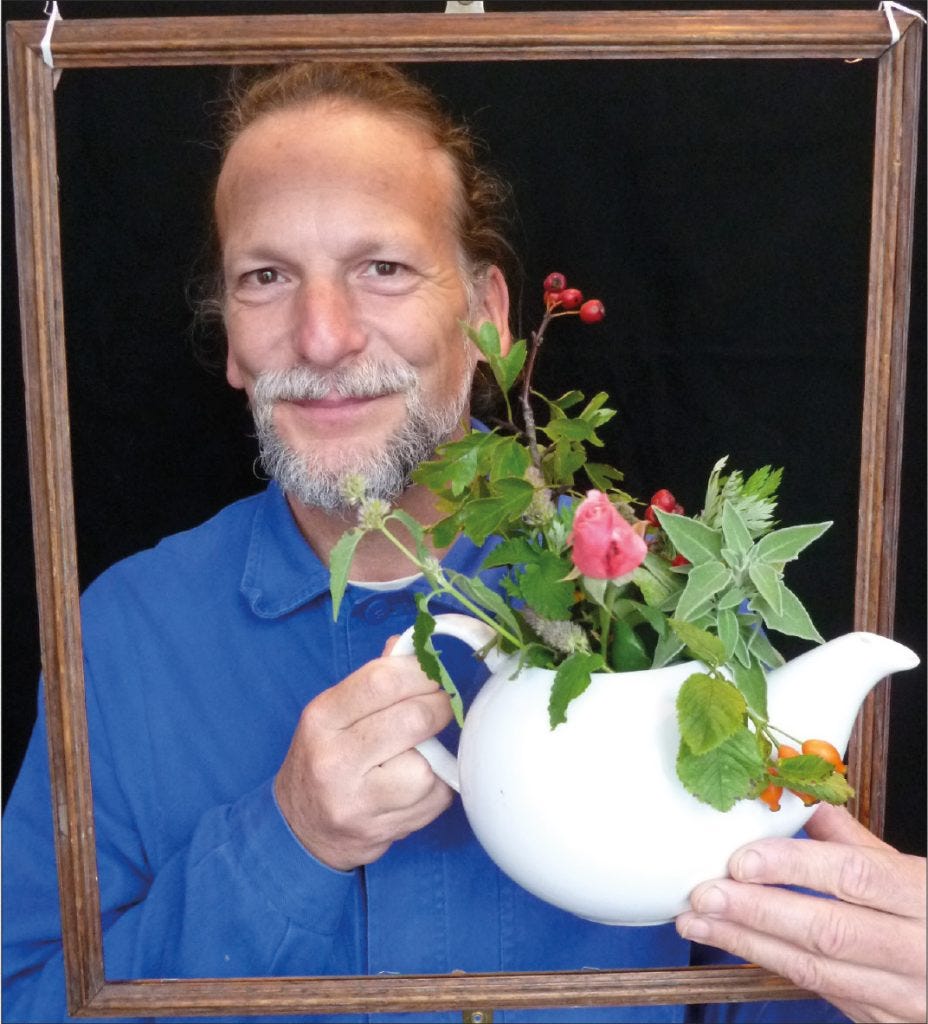
so beautiful. thank you for sharing! love the quote